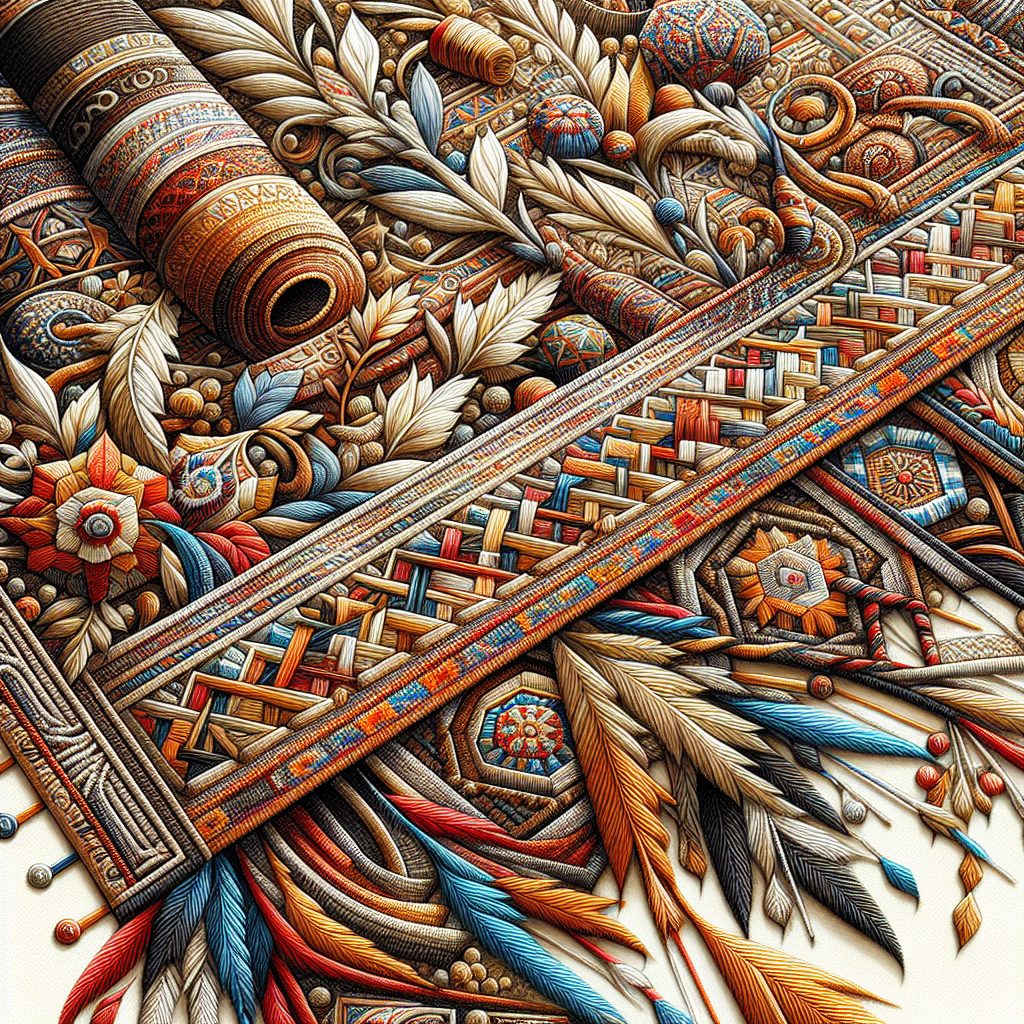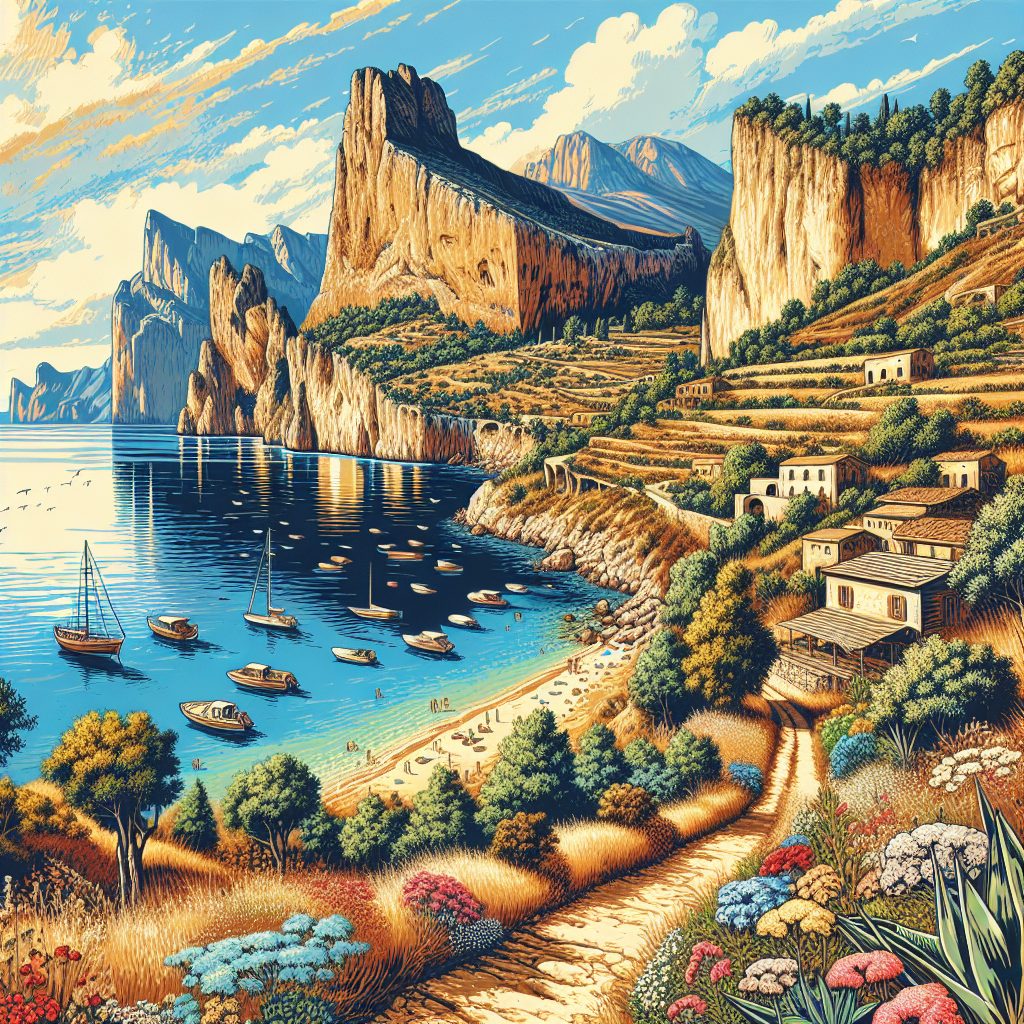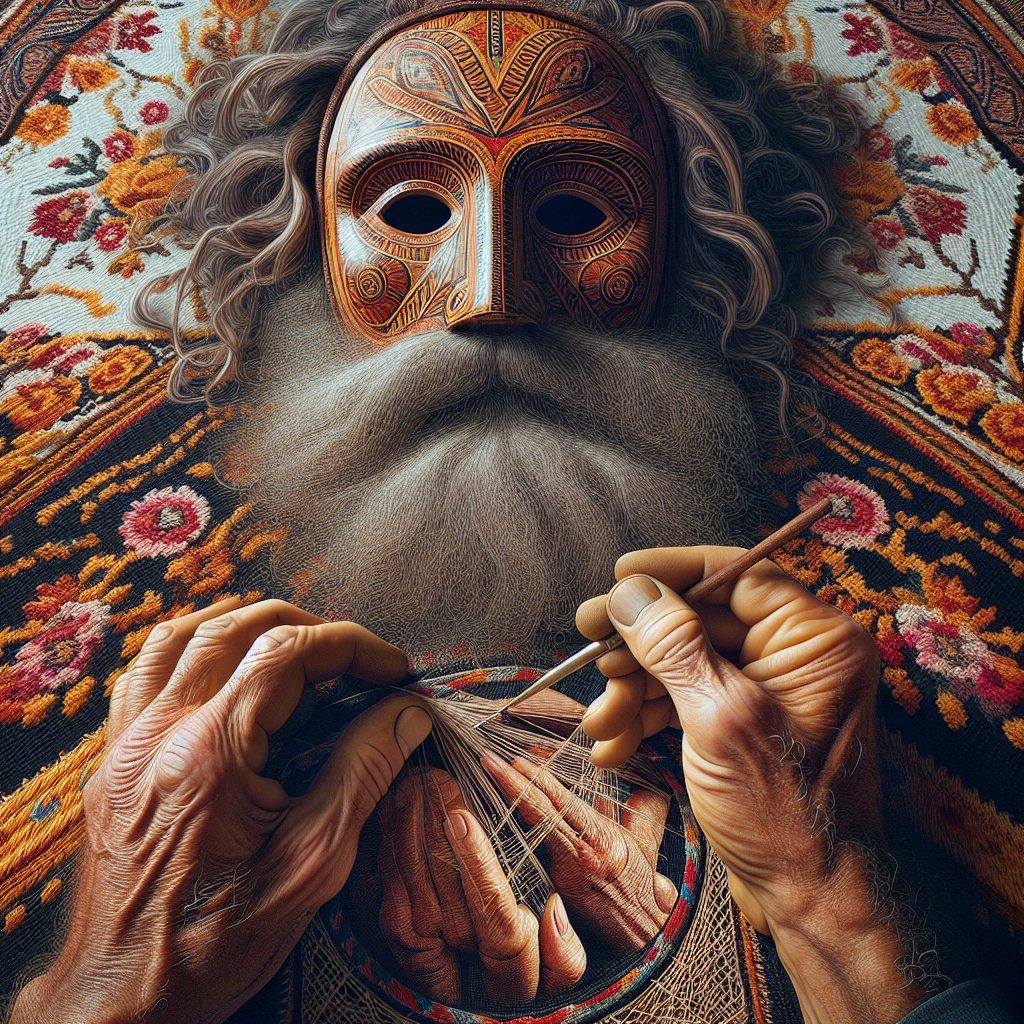Sardinian textile art, also known as “Tessili Sardi,” refers to the traditional fabric and weaving practices that have been passed down through generations in the Italian island of Sardinia. This ancient form of art holds a deep-rooted cultural significance and showcases the island’s rich history and heritage. With its intricate designs and vibrant colors, Sardinian textile art has made a lasting impact on the fashion and interior design industries, captivating art enthusiasts and collectors worldwide. The unique combination of techniques used, such as hand-weaving and embroidery, creates a distinct aesthetic that is both timeless and sophisticated.
One of the most notable impacts of Sardinian textile art is its contribution to preserving and promoting the island’s cultural identity. The art form serves as a visual representation of Sardinia’s traditions and values, showcasing the skill and craftsmanship of its people. Each piece of fabric tells a story, reflecting the island’s history, folklore, and way of life. This intricate art form has also contributed to the cultural tourism industry, attracting visitors from around the globe who are eager to explore and experience the island’s textile heritage.
In the upcoming sections, we will delve deeper into the key aspects of Sardinian textile art. We will explore the various techniques used to create these exquisite fabrics and highlight the symbolic meanings behind the intricate designs. Additionally, we will discuss the influence of Sardinian textile art on contemporary fashion and interior design, as well as the efforts being made to preserve and promote this invaluable cultural tradition. Join us as we unravel the fascinating world of Sardinian textile art and discover the beauty and significance that lies within each thread.
Key Takeaways
1. Sardinian textile art is known for its rich history and intricate techniques dating back centuries. Today, it continues to be a vibrant and important part of Sardinian culture, showcasing the skill and creativity of its artisans.
2. The island of Sardinia is home to various traditional textile techniques, such as filigree, hand weaving, and embroidery, each with its unique characteristics and symbolism. These techniques have been passed down through generations, preserving the island’s textile heritage.
3. Sardinian textiles often feature vibrant colors, geometric patterns, and intricate motifs that reflect the island’s natural beauty and cultural influences. These designs can be found on various textiles, including clothing, tapestries, and household items.
4. While Sardinian textile art has faced challenges and decline in the past due to industrialization and modernization, there has been a recent revival and renewed interest in preserving and promoting these traditional techniques. This revival has brought economic opportunities and a renewed appreciation for Sardinian textiles on a global scale.
5. The preservation and promotion of Sardinian textile art are supported by various organizations, museums, and artisans’ cooperatives, which strive to safeguard the knowledge and skills associated with these textile traditions. Their efforts ensure that Sardinian textile art continues to thrive and contribute to the island’s cultural identity.
What Makes Sardinian Textile Art Unique?
1. Origins and History
Sardinian textile art is deeply rooted in the island’s rich heritage and cultural traditions. Dating back centuries, this art form has been passed down through generations, preserving ancient techniques and patterns unique to Sardinia. The age-old craft of weaving holds a significant place in the island’s cultural identity and is highly valued by its inhabitants.
2. Traditional Techniques
The art of Sardinian textile weaving encompasses various traditional techniques, each requiring meticulous skill and precision. From hand-weaving to loom weaving, these techniques contribute to the creation of stunning fabrics and textiles. The skills required for this craft are often passed on within families and women play a crucial role as the guardians of these unique techniques.
3. Vibrant Colors and Designs
Sardinian textile art is renowned for its vibrant colors and intricate designs. The textiles often feature bold geometric patterns, floral motifs, and symbolic elements that reflect the island’s natural surroundings and cultural influences. The use of local plants and minerals for natural dyes adds to the distinctiveness of the colors, resulting in visually striking and authentic pieces.
4. Wide Range of Products
Sardinian textile artisans showcase their skills in a wide range of products. These include, but are not limited to, traditional garments such as shawls, scarves, and traditional costumes. Additionally, household items like tablecloths, tapestries, and cushions are also commonly woven using traditional Sardinian techniques. The versatility of this art form allows it to be expressed in various functional and decorative ways.
5. Cultural Significance
Sardinian textile art holds great cultural significance within the island’s communities. It represents a proud heritage and acts as a symbol of identity and craftsmanship. Many traditional ceremonies and festivities feature garments and textiles created by local artisans. These crafts not only connect the present generation with the island’s past, but they also contribute to the preservation of Sardinian cultural traditions.
5 Guides for Exploring Sardinian Textile Art:
1. Finding Authentic Pieces
When exploring Sardinian textile art, it’s important to look for authentic pieces created by local artisans. Seek out specialized shops, local markets, or artisan fairs where you can find high-quality and genuine Sardinian textiles. Ask about the artisan’s techniques and the story behind each piece to ensure its authenticity.
2. Learning the Techniques
If you’re passionate about textile art, consider learning the traditional techniques used in Sardinian weaving. Seek out workshops or courses that offer hands-on experience and guidance from skilled artisans. Learning these techniques will deepen your appreciation for the craft and enable you to create your own stunning textiles.
3. Supporting Local Artisans
Supporting local artisans is essential to the preservation of Sardinian textile art. By purchasing their creations or commissioning custom pieces, you contribute to the sustainability of this craft and empower the artisans to continue practicing and passing down their skills to future generations.
4. Exploring Cultural Context
While admiring Sardinian textile art, take the opportunity to delve into the cultural context surrounding it. Visit museums, cultural centers, and exhibitions dedicated to Sardinian traditional crafts. Additionally, engage with locals and discover the stories, meanings, and symbolism behind the textiles to gain a deeper understanding of their cultural significance.
5. Incorporating Sardinian Textiles in Interior Design
Embrace the beauty of Sardinian textile art by incorporating it into your interior design. Whether it’s a handwoven rug, a vibrant tapestry, or unique cushions, these textiles can add a touch of authenticity and cultural richness to your living spaces. Consider mixing them with modern elements to create a harmonious blend of traditional and contemporary aesthetics.
Frequently Asked Questions about Sardinian Textile Art
1. What is Sardinian textile art?
Sardinian textile art refers to the traditional craft of creating textiles, such as fabrics, rugs, and tapestries, using traditional weaving techniques and materials specific to the island of Sardinia.
2. What are the key characteristics of Sardinian textile art?
Sardinian textile art is known for its vibrant colors, intricate designs, and use of local materials like sheep’s wool, linen, and silk. It typically features traditional motifs that reflect the island’s rich cultural heritage.
3. How is Sardinian textile art different from other forms of textile art?
Sardinian textile art stands out for its unique combination of ancient techniques and distinctive regional design elements. It represents a vivid expression of Sardinia’s cultural identity and has a deep-rooted connection to the island’s history and traditions.
4. What are the main techniques used in Sardinian textile art?
The main techniques used in Sardinian textile art include hand-weaving, hand-embroidery, and hand-knotting. Artisans often employ traditional looms to create intricate patterns and designs.
5. Are there specific regions in Sardinia famous for their textile art?
Yes, several regions in Sardinia are renowned for their textile art. Nuoro, San Gavino Monreale, and Samugheo are some of the prominent towns known for preserving and promoting Sardinian textile traditions.
6. Can Sardinian textile art be considered a form of cultural heritage?
Absolutely. Sardinian textile art is considered an integral part of the island’s cultural heritage. The techniques, motifs, and skills passed down through generations contribute to the preservation of Sardinian cultural identity.
7. Is Sardinian textile art still practiced today?
Yes, Sardinian textile art is still very much alive. Many artisans and workshops continue to produce high-quality textiles using traditional methods. The craftsmanship has also expanded to include modern adaptations and innovative designs.
8. Can I purchase Sardinian textile art?
Yes, you can purchase Sardinian textile art from various sources. Local markets, specialized boutiques, and online platforms often offer a wide range of Sardinian textiles, allowing you to own a piece of this cultural legacy.
9. How can I learn more about Sardinian textile art?
You can learn more about Sardinian textile art by visiting cultural museums and exhibitions in Sardinia. Additionally, there are workshops and courses available where you can learn the traditional techniques and even create your own textile pieces.
10. Are there any initiatives to preserve and promote Sardinian textile art?
Yes, there are several initiatives aimed at preserving and promoting Sardinian textile art. Local associations, cultural institutions, and even the Sardinian government actively support and organize events, exhibitions, and educational programs to raise awareness and celebrate this unique form of art.
Final Thoughts on Sardinian Textile Art
Sardinian textile art is not merely a craft, but a reflection of a rich cultural heritage that has been nurtured for centuries. The colors, patterns, and techniques used hold stories and traditions that connect the present to the past, bridging generations and preserving a valuable piece of Sardinia’s identity. Exploring this art form not only unveils the beauty of its masterful creations but also invites us to delve deeper into the island’s unique history.
Through initiatives and the continued dedication of skilled artisans, Sardinian textile art will hopefully endure for generations to come, captivating individuals around the world with its beauty, complexity, and profound cultural significance. It serves as a colorful thread that weaves together the past and present, and inspires us to appreciate and celebrate the rich heritage of Sardinian textile art.






